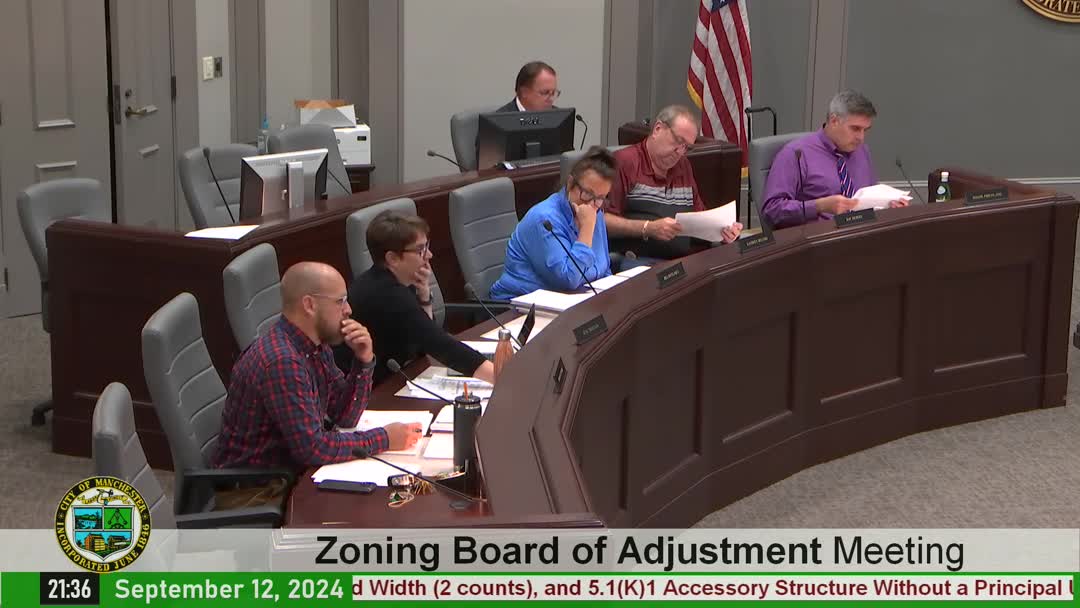Controversial zoning hearing sparks heated neighborhood debate
September 12, 2024 | Manchester Planning & Zoning Board, Manchester, Hillsborough County, New Hampshire
This article was created by AI summarizing key points discussed. AI makes mistakes, so for full details and context, please refer to the video of the full meeting. Please report any errors so we can fix them. Report an error »

During a recent zoning board meeting in Manchester, discussions centered around a variance request for the construction of a single-family home on a 50 by 100-foot lot, a size commonly found in the area. Proponents of the project argued that building on such lots has been a longstanding practice in the neighborhood, with many similar developments occurring without overcrowding or negative impacts on existing properties.
One board member emphasized that the addition of a single-family home would not detract from the neighborhood, suggesting that it could foster new friendships among children in the area. The discussion also referenced Article 11 of the local ordinance, which outlines conditions under which nonconforming lots can be developed, indicating that the request aligns with the spirit of the ordinance.
However, the meeting was marked by tension, particularly regarding the characterization of community concerns. Some board members expressed frustration over the dismissive language used by the attorney representing the applicant, which they felt undermined the validity of local residents' testimonies about their neighborhood.
A key point of contention was the definition of hardship in relation to the variance request. Board members sought clarity on what specific difficulties the applicant would face if the variance were denied. The applicant's representatives argued that the lots were historically intended for development and that denying the request would not reflect the highest and best use of the property.
As the discussion progressed, board members acknowledged the potential for increased property values if the lots were subdivided and developed. They noted that the neighborhood already features a mix of small lots, and the proposed development would not significantly alter the character of the area.
The meeting concluded with a call for further deliberation among board members, as they weighed the merits of the variance request against community concerns and the established zoning regulations.
One board member emphasized that the addition of a single-family home would not detract from the neighborhood, suggesting that it could foster new friendships among children in the area. The discussion also referenced Article 11 of the local ordinance, which outlines conditions under which nonconforming lots can be developed, indicating that the request aligns with the spirit of the ordinance.
However, the meeting was marked by tension, particularly regarding the characterization of community concerns. Some board members expressed frustration over the dismissive language used by the attorney representing the applicant, which they felt undermined the validity of local residents' testimonies about their neighborhood.
A key point of contention was the definition of hardship in relation to the variance request. Board members sought clarity on what specific difficulties the applicant would face if the variance were denied. The applicant's representatives argued that the lots were historically intended for development and that denying the request would not reflect the highest and best use of the property.
As the discussion progressed, board members acknowledged the potential for increased property values if the lots were subdivided and developed. They noted that the neighborhood already features a mix of small lots, and the proposed development would not significantly alter the character of the area.
The meeting concluded with a call for further deliberation among board members, as they weighed the merits of the variance request against community concerns and the established zoning regulations.
View full meeting
This article is based on a recent meeting—watch the full video and explore the complete transcript for deeper insights into the discussion.
View full meeting
